Pulse oximeters aren’t a newly emerging device, but they’ve become increasingly popular for home use in this post-pandemic era. (1) They offer a convenient and noninvasive method for testing critical vital signs at home, like oxygen levels and heart rate. These small devices often clip onto your finger and use different wavelengths of light to determine how much oxygen is being carried in the blood, also called oxygen saturation (SpO2). (2)
Pulse oximeters have many uses, including monitoring the health of individuals with respiratory conditions or lung disease—sometimes used alongside home oxygen concentrators. Your provider may also recommend one for tracking nighttime patterns if they suspect you have sleep apnea. Other individuals may use them recreationally, such as monitoring oxygen levels and heart rate during sports and fitness activities or at high altitudes while hiking or flying.
With such a vast market for these devices, choosing the right one for your needs and intended use can seem overwhelming. We want to help you make an informed decision, so we’ve put various devices through a meticulous evaluation process, assessing each one for accuracy, accessibility, comfort, and user-friendliness.
Editor’s pick for pulse oximeter
The Oxiline 9S Pro is our top pick due to its FDA-clearance and exceptional accuracy. The device provides readings for blood oxygen concentration, perfusion index, and heart rate. The rotating display and large, bright print makes it a great choice for those with any vision or dexterity issues.
Medical disclaimer: This article is intended for educational and informational purposes only. It is not intended as a substitute for medical advice. For health advice, contact a licensed healthcare provider.
Our picks for the best pulse oximeters
- Best FDA-approved: Oxiline 9S Pro
- Best medical grade: Lofta MightySat
- Best for home use: Innovo Deluxe iP900AP Fingertip Pulse Oximeter
- Best for overnight monitoring: Wellue O2Ring
- Easiest to use: Zacurate Pro Series 500DL Fingertip Pulse Oximeter
- Best for active people: iHealth Fingertip Pulse Oximeter
Compare pulse oximeters
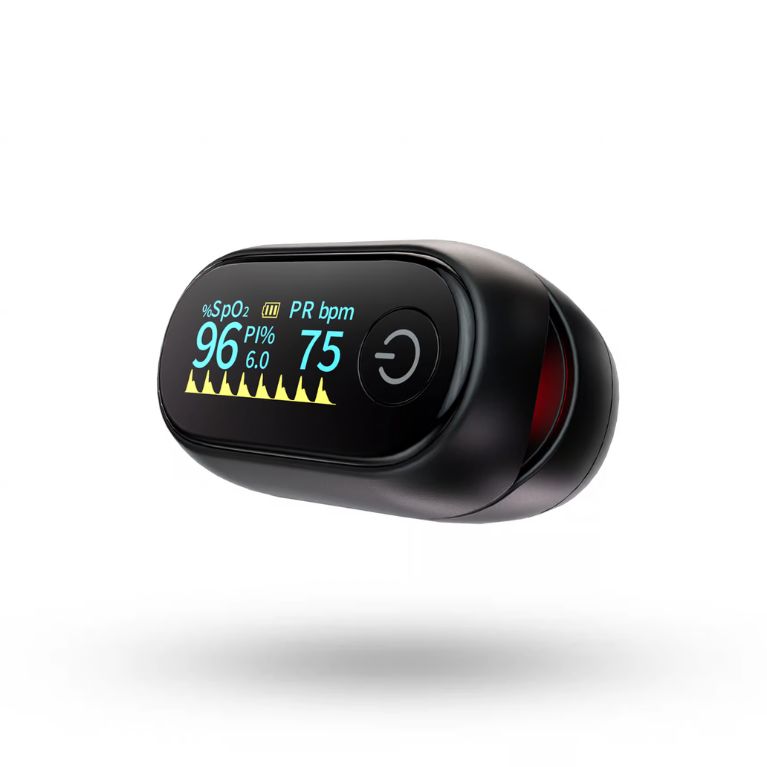
|
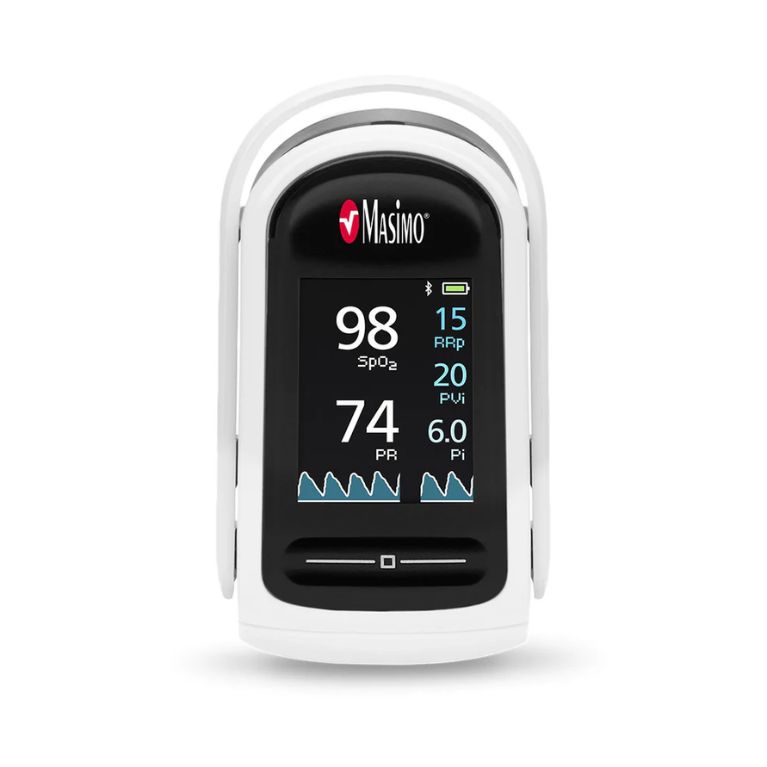
|
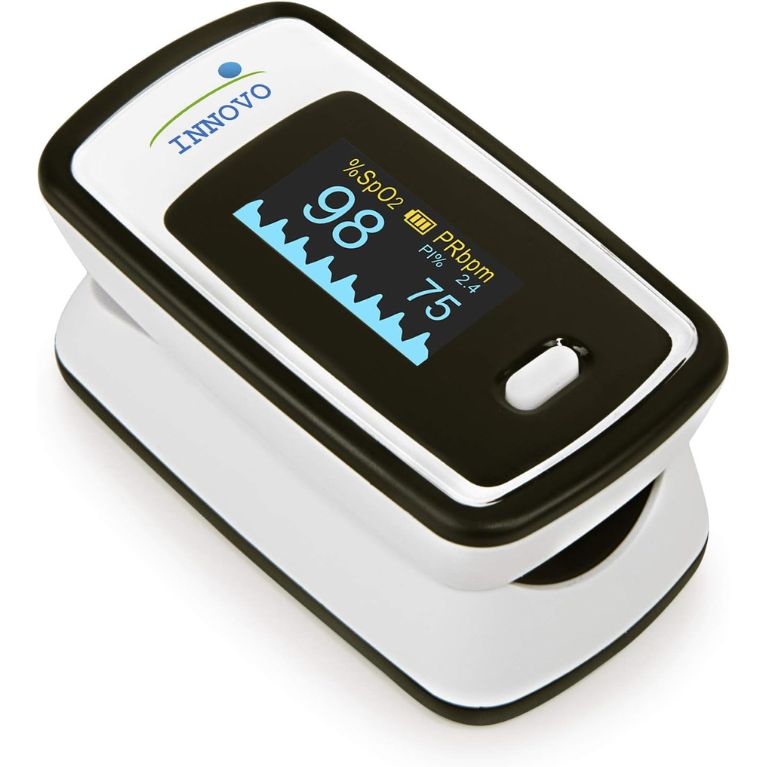
|
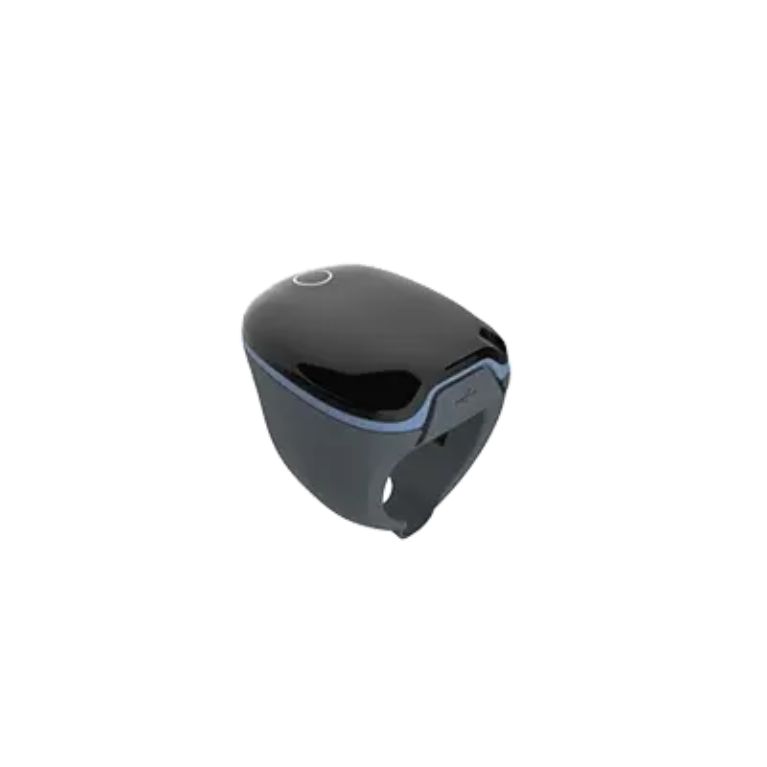
|
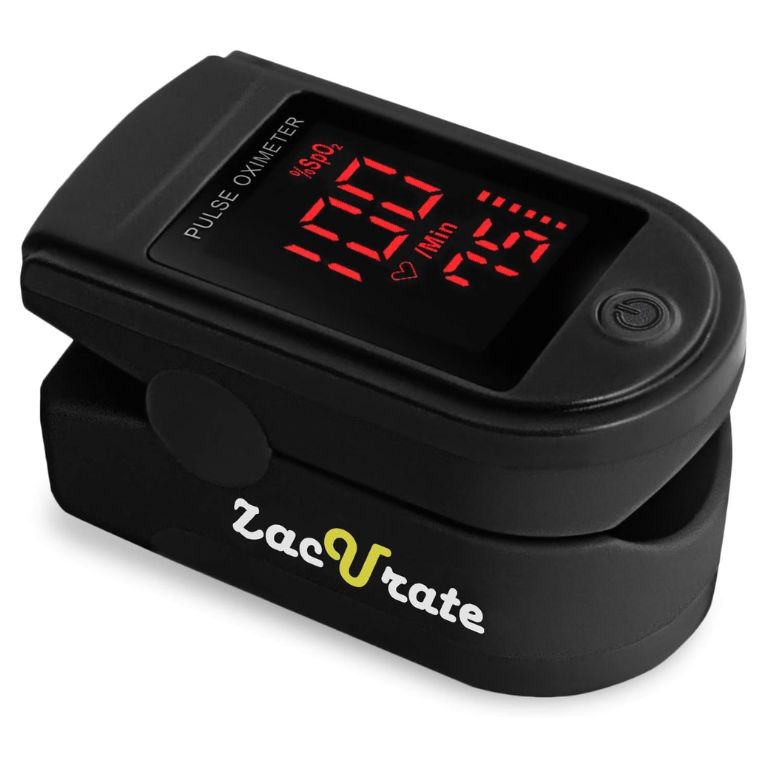
|
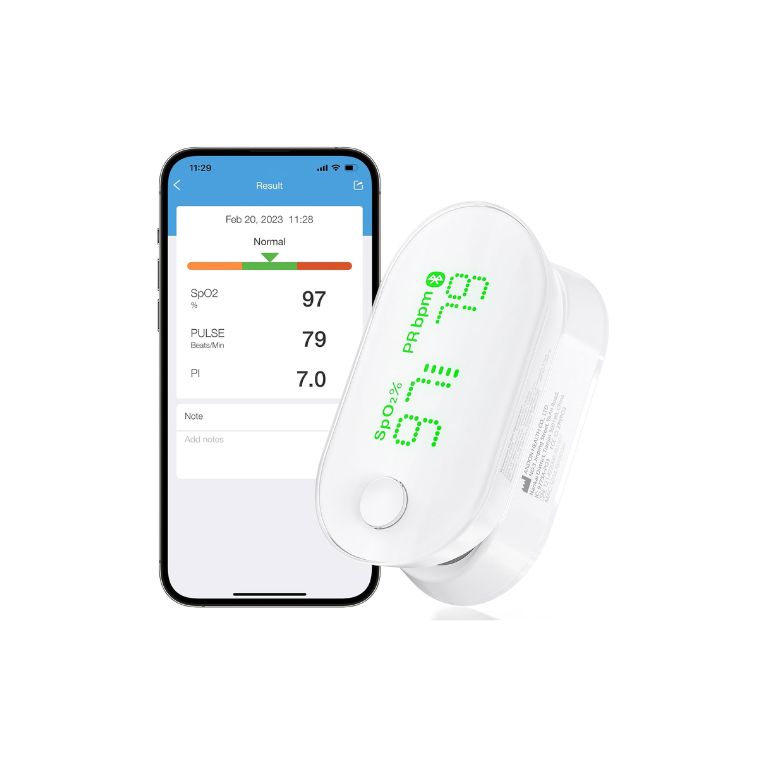
|
|
| Oxiline 9S Pro | Lofta MightySat | Innovo Deluxe iP900AP Fingertip Pulse Oximeter | Wellue O2Ring | Zacurate Pro Series 500DL Fingertip Pulse Oximeter | iHealth Fingertip Pulse Oximeter | |
| Rating | ||||||
| Price | $89.00 | $298.00 | $34.99 | $179.00 | $22.99 | $42.99 |
| Type | Fingertip | Fingertip | Fingertip | Wearable ring | Fingertip | Fingertip |
| FDA-cleared | Yes | Yes | Yes | No | No | Yes |
| Battery type | AAA | AAA | AAA | Rechargeable | AAA | Rechargeable |
Best FDA-approved pulse oximeter: Oxiline 9S Pro
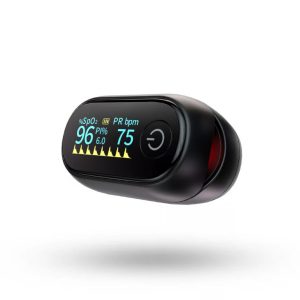

Key product features
What you should know
The Oxiline 9S Pro is an accurate and reliable pulse oximeter that has gained FDA clearance. It provides readings for blood oxygen concentration, heart rate, and perfusion index.
- Using the device is very straightforward, with a simple, user-friendly design.
- It’s not the cheapest device we reviewed, at $89, but its accuracy, reliability, and durability make it worth the extra cost.
- The results are displayed in less than seven seconds in large, bright print.
- The rotating display makes it easy to read results from any point of view, which can be especially helpful for caregivers.
Why we like Oxiline 9S Pro as best FDA-approved
The Oxiline 9S Pro impressed us with its accurate, reliable readings and user-friendly design. After careful review for safety and performance, it has earned FDA clearance, which can generate greater trust in the device. (3)
The pulse oximeter arrives fast, with free three- to four-day shipping. The box includes everything you need to get started: batteries, a lanyard, and the user manual. We appreciate how easy it is to get started—you simply insert the batteries and turn on the device.
As a fingertip model, you can insert any finger into the device to get your readings. It also doesn’t matter which hand you place it on or who’s reading the results since it has a rotating display. This is one of our favorite features as it makes it easy to read from any point of view, which can be a considerable benefit to help ease the burden on caregivers who plan to use the device to gather readings from someone else.
The 9S Pro offers a comfortable and snug fit, which is important for accurate readings. (4) Because pulse oximeters are sensitive to movement, it’s generally best to sit down and remain still while gathering your readings. After placing it on your finger, you can see your results in under seven seconds. The OLED display features large, bright, multicolor digits, making it easy to read from any angle.
On the screen, you can see your oxygen saturation (SpO2) and pulse rate (BPM). Moreover, the results include your perfusion index (PI), which indicates how well your blood circulates to that finger. (5) This can help indicate whether you’re using the device correctly and how reliable the readings are.
Another display highlight is the low battery indicator, which allows you to ensure you have new batteries ready without skipping a beat. Moreover, the device features an auto shutdown that will turn off after 15 seconds without use to help preserve the battery. The two AAA batteries can last up to 24 hours of continuous use, but you can expect them to last much longer if you’re just doing occasional spot checks throughout the day.
You’ll have to buy the device directly through Oxiline, as it’s unavailable on popular third-party websites like Amazon. At $89, it’s also more expensive than some of the more affordable at-home pulse oximeters, which are often less than $50. However, we feel that the lifetime warranty and 30-day money-back guarantee add value and help justify the higher price.
What our experts say
“When the FDA approves a device or medication, you can be assured that the product is safe and effective for its intended use,” said Dr. Aneesha Dhargalkar, MD. “Getting FDA approval is difficult, requiring vigorous research and testing. Knowing that that the Oxiline 9S Pro is FDA-approved puts it on the top of my list for pulse oximeters.”
What customers are saying
Independent reviews of the 9S Pro pulse oximeter are challenging to find since the device is only sold directly through Oxiline. However, we found a few reviews directly related to the device on Trustpilot and general comments about the company.
Lucy L., a Trustpilot reviewer who praises Oxiline for its high-quality medical devices, says, “I recently purchased Pulse 9S Pro, and I’m satisfied with my experience. The quality and efficiency of their service make them my go-to choice for medical equipment. Highly recommended!”
“This is a nice pulse oximeter unit that measures the amount of oxygen in the bloodstream. As a retired health professional, I know how valuable that information can be. Like most pulse oximeters, it also measures your heart rate.”
Logan B., Trustpilot reviewer
Unfortunately, many reviewers complain about Oxiline’s poor customer service. Customers state they’ve contacted the support team for help setting up or returning devices, but they don’t receive a response.
Lori L. says in their Trustpilot review, “I ordered a piece of health equipment from Oxiline. I received an email saying they hoped I liked the equipment even though I had not received it. I have called numerous times only to be told they are unavailable. I have emailed, both on their web-based email system and on regular email, and have received no response. Their customer service is nonexistent.”
Specs
| Price | $89.00 |
| Type | Fingertip |
| FDA-cleared | Yes |
| Battery type | AAA |
| Shipping | Free |
| Size | 63.5 mm x 36 mm x 34 mm |
Best medical grade pulse oximeter: Lofta MightySat
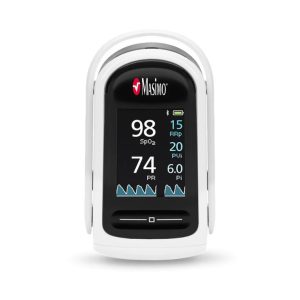

Key product features
What you should know
The Lofta MightySat is a high-quality pulse oximeter offering superb accuracy and advanced features. It has Bluetooth capabilities to sync your results to your phone.
- It takes longer to set up because it needs to be connected to the app, but the testing process is simple and quick after that.
- Not surprisingly, this medical-grade device comes with a much higher price tag of $298.
- The app lets you see your result history to help you identify trends and patterns.
- The included carrying case makes it easy to take wherever you go.
Why we like Lofta MightySat as best medical grade
Using the same technology as the company’s hospital-grade devices, the MightSat Fingertip Pulse Oximeter offers incredible accuracy from the comfort of your home. It was the first over-the-counter (OTC) pulse oximeter to receive FDA clearance, paving the way for other competitors.
This device relies on Masimo’s SET® technology, which helps provide more reliable readings in challenging situations, such as low blood flow, cold extremities, movement, and differing skin pigmentations. (6) We cannot overstate this benefit since less advanced pulse oximeters typically produce significantly less accurate results in individuals with dark skin colors, trembling hands that cause excessive movement, or poor circulation. (7)
When you receive the device, the setup process will take longer than some more basic models if you use the free mobile app to record your results. However, you can use the device without the Bluetooth connection. In that case, all you need to do is insert the batteries (included in the box) and power on the device to start using it. If you choose to connect it to your mobile device, we found the instructions straightforward to follow.
The app is a significant highlight of MightySat since it allows you to store and view your data history. When viewing your measurements live, you can see your individual results for each measurement or change to a graph view that shows the trends of your real-time data as you continuously take your readings. Moreover, you can set your own thresholds and add an alarm that will beep if any measurement is outside of that range. However, some users left notes in their app reviews wishing you could customize the alarm sounds.
The app also allows you to view results history on the app and export as a CSV. This can be especially useful for determining trends or patterns in your readings or sharing your results with your medical provider. Additionally, you can set up separate profiles so multiple people can use the pulse oximeter, even if you share the same mobile device for tracking.
This is another pulse oximeter model that has a rotational OLED screen, which makes it easy to read from multiple angles. It displays SpO2, pulse rate, and perfusion index in only a few seconds.
Its policies and warranties aren’t as generous as those of other models, including the two-year limited warranty. Additionally, you can only return the device if it is unopened, so once you try it, it’s yours. However, if you do choose to return it, you’ll at least be given a full refund.
What our experts say
“Numerous biologic factors exist which can lead to inaccurate pulse oximetry readings in patients,” said Dr. Dhargalkar. “For example, a review of 44 studies of over 220,000 patients found that most studies consistently reported an overestimation of pulse oximetry in those with darker skin tones compared to those with lighter skin tones. (8) The medical-grade technology found with the Lofty MightySat helps overcome these challenges, leading to more accurate readings. In addition, the ability to record and save past measurements and track them over time provides valuable information to your medical provider when making decisions regarding your health.”
What customers are saying
With just shy of 550 reviews on Amazon, the MightySat earns 4.4 stars overall. Reviewers comment on how easy it is to set up and how accurate the results are.
Rhiannon W. admits this device is pricey but says it’s worth it for quality and accuracy: “I have lung cancer and need oxygen on occasion. I have bought so many oximeters to try and monitor, but when put up against the ones at the doctor’s office, they were always off by quite a bit. Also, old ones would take forever to figure out my oxygen level. It’s not something you want to wait on when you’re struggling to breathe. Between the fast response and the app to track and explain other values, this is a great investment for tracking my levels. Plus, when double-checked at the doctor’s office, Massimo is correct every time. I also love the continuous monitoring aspect. I would highly recommend it, but the cost is the only downside. I understand quality costs money, but health equipment like this is hard to find, at least ones that actually work.”
“The device is easy to use, and the respiration rate monitoring is accurate. What I like most about this device is that it allows you to extract your history data as a CSV report, which can be shared with healthcare providers for a quick review.”
Burton, verified Amazon customer
The negative reviews raise questions about the device’s longevity. Some customers have experienced issues with the display going dark after a year or two of use, often after the expired warranty.
Specs
| Price | $298 |
| Type | Fingertip |
| FDA-cleared | Yes |
| Battery type | AAA |
| Shipping | Free |
| Size | 7.4 cm x 4.1 cm x 3.0 cm |
Best pulse oximeter for home use: Innovo Deluxe iP900AP Fingertip Pulse Oximeter
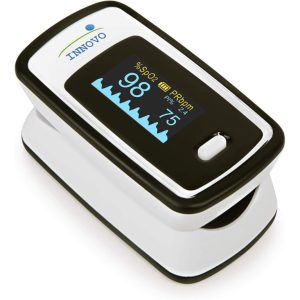

Key product features
What you should know
The Innovo Deluxe iP900Ap is designed for individuals needing to regularly monitor their blood oxygen levels and pulse rate. Its competitive price makes it an excellent choice for in-home use.
- You only need to push one button to get accurate results within seconds.
- You can buy it at full price for $34.99, but we’ve also seen it on sale for under $30.
- It can track oxygen levels before or after exercise, during flight for pilots, and for regular spot-checking at home or on the go.
- The device allows you to preset your ideal result ranges and will sound an alarm if your readings fall outside those limits.
Why we like Innovo Deluxe iP900AP Fingertip Pulse Oximeter as best for home use
The Innovo Deluxe iP900AP is an affordable and accessible pulse oximeter that helps it appeal to a broad range of customers for in-home use. This budget-friendly device offers valuable readings at a fraction of the cost of a few other models we reviewed. Yet, its cheaper price doesn’t diminish its accuracy or quality.
The device’s primary function is to provide readings for SpO2 and pulse rate, and the improved sensor in this deluxe model allows for greater accuracy even when the perfusion index is lower. We like that the display is brightly lit with easy-to-read digits. You can also adjust the display brightness to help you see it better and choose between six display layout options that change the direction of the results on the screen, depending on what hand you’re using and who’s reading the results.
The display also includes a pulse strength indicator, called a plethysmograph, which helps you visualize the reliability of your results. The pulse oximeter is ready to deliver accurate results when you see consistency in wave amplitude. If the waves vary or you see a PI value less than 0.2%, it could mean your hands are too cold or your finger isn’t positioned correctly in the device.
Another feature that caught our attention is the ability to preset alarms. You can set high and low limits for SpO2 and pulse rate. If your results fall outside of either of those ranges, the device will trigger an alarm. The alarm is silent by default, flashing the results on the screen, or you can turn on an audible beep. In our review, many users found the alarm feature to be a significant highlight and said it wasn’t too loud or annoying, especially when using the device within your own home. You can also snooze the beep for 30 seconds or turn it off altogether if it feels disruptive.
You can purchase the Innovo Deluxe directly from the company or order it from third-party retailers like Amazon and Walmart if that feels more convenient. When you receive the device, it’ll come ready to go with AAA batteries and a lanyard for easy carrying. While we think this pulse oximeter is an excellent on-the-go option, it doesn’t come with a carrying case like some competitors. However, you can add one to your order for under $10.
What our experts say
“The Innovo Deluxe Fingertip Pulse Oximeter has two features, making it one of the best choices for an at-home monitoring device,” said Dr. Dhargalkar. “The perfusion index measurement ensures that you are getting adequate blood flow to your fingers, therefore producing an accurate pulse oximeter reading. Hypoperfusion can lead to falsely low pulse oximetry readings, and the perfusion index helps prevent this inaccurate result. The plethysmograph feature of this device also looks at finger blood flow, displaying it in a waveform. Consistency in the pulse wave amplitude ensures that your pulse oximeter reading will be accurate.”
What customers are saying
The Innovo Deluxe garners impressive ratings on Amazon with 4.7 stars after receiving over 45,000 reviews. It’s a customer favorite for its user-friendly design, accuracy, and durability.
J. Jones left a review on Amazon describing their positive experience:
“I am so pleased with the meter; it’s easy to use. I even brought it to my last doctor’s visit to check its accuracy; its performance matched the readings of the doctor’s meter. It’s a great price, too.”
J. Jones, Amazon
Amazon reviewer “hopidopi” is a repeat customer who says, “This is the third Innovo pulse oximeter I’ve gotten. They work extremely well and are accurate. I’ve calibrated them against the ones in my doctor’s office. I’m not sure if this is new, but the one that just arrived came with a neck lanyard. It’s perfect for carrying around while you exercise. These are terrific for anyone that needs to monitor their oxygen levels.”
A common complaint with this device is its slow result time. For example, Amazon reviewer “Dcapo” says, “It doesn’t give me a fast read as others have in the past.”
Specs
| Price | $34.99 |
| Type | Fingertip |
| FDA-cleared | Yes |
| Battery type | AAA |
| Shipping | Free |
| Size | 2.5 in x 1.35 in x 1.25 in |
Best pulse oximeter for overnight monitoring: Wellue O2Ring
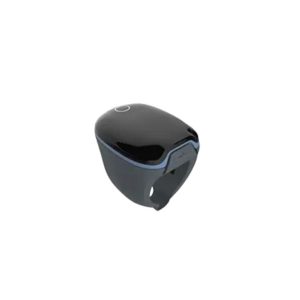

Key product features
What you should know
As a wearable pulse oximeter, the Wellue O2Ring provides continuous monitoring, capturing oxygen levels, heart rate, and movement. It can be worn overnight or throughout the day.
- You can wear it on your thumb or index finger, and the flexible silicone band feels comfortable and adapts to most finger sizes.
- It will cost you $179, which is competitively priced compared to other wearable devices.
- This device can be handy for tracking nighttime oxygen levels, but it can also benefit those monitoring chronic conditions, altitude adaptation, and sports performance and recovery.
- The free app stores unlimited results, displaying them in helpful graphs that can be downloaded and shared with your medical provider.
Why we like Wellue O2Ring as best for overnight monitoring
The Wellue O2Ring offers a convenient and comfortable way to continuously monitor your blood oxygen levels and heart rate, notably for those who want to track it overnight. This may be helpful with those who have sleep apnea, lung conditions, or any other concerns with their oxygen levels. The device provides real-time data that can give helpful insight for individuals wishing to learn more about their sleep health, daytime oxygen levels, or performance and recovery metrics after physical activity.
We love the innovative design of the O2Ring. Many competitors’ overnight monitors require you to wear a wrist monitor with an attached fingertip sensor, which can feel bulky and may slip off or move around more at night. Meanwhile, the O2Ring offers a lightweight, sleek design that you can wear on your thumb or index finger.
The elastic silicone material adapts to your finger, accommodating most finger sizes between two and 3.2 inches. You should choose a finger that offers a snug fit, which is essential for accurate readings. I have skinny fingers, so I worried it may not fit me well. However, the option to wear it on my thumb is helpful. Plus, Wellue offers it in a MiniRing option designed for kids and adults with smaller fingers.
After slipping it onto your finger, the ring automatically turns on and begins tracking SpO2, pulse rate, and motion data, collecting data every second. We encourage you to download the free Vihealth app to sync your data. It has unlimited storage and generates charts and other valuable insights from your data, such as how much time you spent below 90% SpO2 and your high, low, and average pulse rates.
The data is collected every second, but the reports on the app show it in four-second intervals. You can view your daily report, weekly, monthly, or the entire year. The graphs are broken out into oxygen levels, pulse rate, and motion.
You can download your sleep report as a PDF or CSV and share it with your medical provider. We found the report a bit hard to interpret ourselves. However, it may be helpful for a trained medical professional to review if you have any concerns about your sleep or overall health. You can also use the ring without the app. Its built-in memory will store data for 10 hours.
We were excited to discover the silent alert feature within the O2Ring settings. You can customize the oxygen level and heart rate limitations that trigger the alarm. Additionally, you can adjust the vibration strength, depending on how concerned you are with it disturbing your sleep.
We focused on this ring as a nighttime wearable device. However, during our evaluation, we found that many individuals use it during daytime activities, too. It’s popular for hikers and pilots who want to monitor their oxygen at high altitudes. Keep in mind that excessive motion will disrupt readings, so it’s not meant to be worn during exercise unless you pause your activity to spot-check your levels.
The 3.7V lithium polymer rechargeable battery lasts up to 16 hours, which should be plenty of time for nighttime or daytime wearing. It won’t last through the day and night, so if you want to wear it during both timeframes, you must ensure a two—to three-hour window to charge it. Or, Wellue offers a bundle deal to purchase two rings for $268.50, allowing for 24-hour continuous monitoring.
What our experts say
“Sleep apnea is a debilitating medical condition, affecting 15-30% of males and 10-15% of females in North America (9), “ says Dr. Dhargalkar. “Many patients with sleep apnea will have fluctuating pulse oximetry levels throughout the night, often trending on the low side. For these patients, the Wellue O2Ring offers an easy-to-wear, convenient monitor to track oxygenation and heart rate throughout the night.”
What customers are saying
With over 1,500 reviews on Amazon, the Wellue O2Ring is a popular choice. Customers give it an overall rating of 4.2 stars, citing accuracy, comfort, and peace of mind as significant highlights.
We found plenty of five-star reviews, but Amazon customer “Wolford2129” summed them all up beautifully in their lengthy review: “I was recently diagnosed with Atrial Fibrillation (Afib). This works great for tracking my condition while sleeping. I was worried it wouldn’t fit since it looked big in the product pictures, and I have skinny fingers/thumbs. It fits nicely, though. It’s not too big or small, and it’s comfortable. I was also worried because some reviews said it was inaccurate, but mine seems to be really accurate. The heart rate matches my Garmin 405CX (with a chest strap) and my Emay portable ECG. The oxygen levels match the small pulse oximeter I have within 1%-2%.
It’s super easy to use. Put it on your thumb, and it turns on and starts recording. So far, I can use it all night, sometimes for 9 hours or more, and it still has a little under half battery left. If you have it on for over 10 hours, it will start a new recording as each one is limited to 10 hours, but it does it automatically so you don’t lose any data. The screen goes off after about 30 seconds, and you can turn it on (for another 30 seconds) by tapping the circle on the screen. This lets me easily check if I wake up in the middle of the night.”
They continue to describe how valuable the data charts and graphs are and how helpful the ring has been in monitoring oxygen levels to ensure their CPAP is working properly.
A common complaint we saw among users on Amazon is the quality of the ring band. Some reviewers, like Jan, say it broke within months of daily use: “I bought this a few months ago. I wear it every day, and it works great! But after less than three months, the stretchy part of the band broke. I use it on my pointer finger, and it’s nowhere near stretching the band. It just wore out. Seems pretty expensive for something that doesn’t last three months.”
Specs
| Price | $179 |
| Type | Wearable ring |
| FDA-cleared | No |
| Battery type | Rechargeable |
| Shipping | Free |
| Size | 1.5 in x 1.2 in x 1.5 in |
Easiest to use pulse oximeter: Zacurate Pro Series 500DL Fingertip Pulse Oximeter
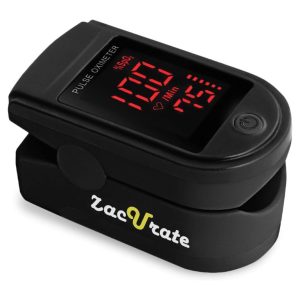

Key product features
What you should know
The Zacurate Pro Series 500DL features a one-button operation that offers quick, reliable results without complicated settings. Its sturdy, lightweight construction makes it portable and durable.
- While its functionality is simple, it still delivers highly accurate readings.
- This is the most budget-friendly device on our list, with a low cost of only $22.95.
- The adaptive silicone finger chamber suits many finger sizes, including users ages 12 and up.
- It comes with a protective silicone cover so you can carry it anywhere without worrying about it getting dirty or damaged.
Why we like Zacurate Pro Series 500DL Fingertip Pulse Oximeter as easiest to use
We chose the Zacurate Pro Series 500DL for its straightforward and intuitive design. You may not need a more advanced device with extra bells and whistles if you’re simply looking for accurate blood oxygen levels and pulse rate readings. Instead, we found Zacurate offers an easy-to-use, budget-friendly solution.
This pulse oximeter provides a comfortable fit with a finger chamber that adjusts to your finger size. We were impressed with the wide range of finger sizes it can accommodate. Moreover, it’s made of medical-grade silicone, which is hypoallergenic.
The setup process is effortless. You simply insert the batteries and turn on the device. The display shows SpO2, pulse rate, and a bar graph for pulse strength. Some notable differences from competitors are the longer 10-second result time and the lack of perfusion index readings. If those features are important to you, you may be better off with a different model.
The LED screen is large with easy-to-read digits. We found it convenient that the results display facing you when you have the device on your finger. However, we wished it had the option to rotate the screen so you could see the results from additional angles, especially if you have a caregiver assisting you.
Like other models, the Zacurate pulse oximeter is a complete kit with AAA batteries and a lanyard. As a bonus, you also get a silicone cover that helps protect the device from dirt and damage, increasing its portability and durability.
While it may seem like a small detail, we appreciate how easy it is to change the batteries on this pulse oximeter. The quick snap-off battery cover can help those with dexterity issues. You can also choose between three color options: black, purple, and pink. It may seem trivial, but it offers one more way to customize your experience.
What our experts say
Per Dr. Dhargalkar, “Not all pulse oximeter users carry a respiratory medical diagnosis such as chronic obstructive pulmonary disease, sleep apnea, or asthma. For many consumers, pulse oximeters measure oxygen saturation and heart rate at specific points, such as during and after exercise or when down with a respiratory illness such as COVID or the flu. The Zacurate pulse oximeter is a great diagnostic tool for these patients because it is easy to use and read.”
What customers are saying
We weren’t the only ones impressed by the Zacurate pulse oximeter. With 80% of the over 225,000 ratings earning five stars, it’s a popular choice among Amazon customers who like it for its value, ease of use, and accuracy.
“I took mine to my Pulmonary Rehab class to test its accuracy against the expensive hospital ones. The results were a perfect match! The screen is clear with good resolution, and the profile cover is a nice perk.”
Thomas S., Amazon user
“My husband has to keep track of his pulse oximetry due to him being prone to clotting disorder,” says Amazon customer Ray H. “This meter is the best one we have had thus far. Others do not work outside and give false readings, but not this one. If you’re unsure which one to buy, I suggest this one!”
Some Amazon users complain about how long it takes to get results, like C. Anderson, who says, “The directions say it only takes a few seconds to display results. My old one worked as such. The new one can sometimes take more than a minute.”
Specs
| Price | $22.95 |
| Type | Fingertip |
| FDA-cleared | No |
| Battery type | AAA |
| Shipping | Free |
| Size | 2.25 in x 1.25 in x 1.25 in |
Best pulse oximeter for active people: iHealth Fingertip Pulse Oximeter
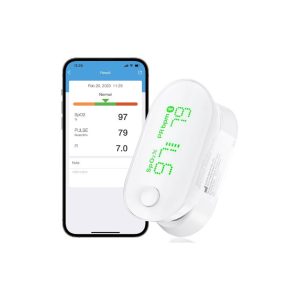

Key product features
What you should know
The iHealth Fingertip Pulse Oximeter offers a portable design that allows you to use it at home or on the go. You can connect it via Bluetooth to the iHealth app to store your results and see health trends.
- The device can be used alone or with the iHealth app for continuous monitoring and advanced features.
- The full price is $42.99, but during our review, we found it significantly discounted to $24.59 with an additional $5 off coupon on Amazon.
- Multiple people can use the pulse oximeter and create their own iHealth account to store their unique results.
- While you can’t use it while in motion, it’s an excellent way to monitor oxygen levels and pulse rate before activity, after, and during active breaks.
Why we like iHealth Fingertip Pulse Oximeter as best for active people
The iHealth Fingertip Pulse Oximeter’s small, sleek design makes it easy to take with you while hiking, running, biking, or any other strenuous activity. Monitoring your oxygen levels and heart rate before, during, and after activity can help you exercise safely and effectively. (10) You can gather readings to ensure your oxygen levels and heart rate are within your target ranges, which you should establish according to your doctor’s guidelines.
One critical note is that the pulse oximeter can’t gather accurate results while moving, so you’ll need to pause for a few seconds to get a reading during your activity.
The iHealth pulse oximeter is also a popular choice in the aviation industry. When pilots are flying at high altitudes, they can experience the effects of oxygen deprivation. A pulse oximeter can help identify when they may need to use supplemental oxygen, and this monitor is a perfect tagalong on those flights. (11)
The quick start guide demonstrates how easy this pulse oximeter is to use. Once you charge the battery, you simply insert your finger into the chamber and turn the device on. One notable difference compared to the other fingertip devices we tested is that you place the nail side of your finger facing downward in the chamber, which is the opposite of others. It doesn’t change the results; it just indicates different sensor placement within it.
The results appear within a few seconds on the large display screen in bold, bright green font. I could read the results clearly, but I wonder if some individuals may find the dotted digits more challenging to interpret if they have difficulty reading unique print styles.
The device’s display shows SpO2 levels, pulse rate, and pulse strength. If you download the iHealth app and pair your device, you’ll also be able to see your perfusion index and a visual of the pulse wavelength (also called plethysmograph). Furthermore, you can view your result history and whether or not your readings fall within the normal ranges. You can view your daily results, weekly values, monthly data, or the entire year’s worth. Moreover, you can choose to export your measurements as a CSV, XLS, or PDF to share with your provider. You can choose a report that includes 30 days, 90 days, all of your data, or a custom data range.
One feature that truly stood out with this pulse oximeter is that multiple people can use it while still benefitting from the app’s features. Users can create their own iHealth app account and sync their results to their mobile devices. You can also sync it to your Apple Health account to have all your health data in one spot.
The 3.7V lithium-ion rechargeable battery can last up to 150 days, or about 300 measurements, before recharging. Of course, this will vary depending on how often you use the device. However, it has an auto-shut-off feature that turns the device off after eight seconds without use to conserve the battery. While the battery should last years, if it stops holding a charge, you won’t be able to change it out. Instead, you must replace the whole pulse oximeter. Considering rechargeable batteries can cost up to half the price of this unit, upgrading to a new one may provide more benefits if the newer model comes with enhancements and tech upgrades.
What our experts say
“The AppleHealth app is a great tool that gathers health data from the iHealth fingertip pulse oximeter and your iPhone, iPad, Apple Watch, and other Apple products. The oxygen saturation and heart rate measurements from the oximeter combine with other health data to create a comprehensive picture that can significantly benefit your medical provider when making healthcare decisions. Other data that can be tracked on your AppleHealth app include activity levels, quality of sleep, and daily medications, “ states Dr. Aneesha Dhargalkar, MD.
What customers are saying
You can buy the device directly from iHealth or from Amazon, where it earns 4.3 stars overall. The more than 3,500 reviews contain many positive remarks about its convenience and quick results.
“I love this tool,” wrote Sheila Rose. “It gave me the information I could pass along to my health provider that targeted what he needed to see if the medications he prescribed for my COPD were working or not. I didn’t have to continue making multiple trips to the clinic. It was accurate and easy to read. It also gave me an understanding of my body’s normal rates and ranges to reach out when the numbers weren’t good. I believe it saved my life when my numbers plummeted to life-threatening lows.”
“This pulse oximeter is simple to use, works perfectly, and is better quality than I expected for the price! As a pilot, I find it simple and effective and great to have for long cross-country flights in non-pressurized, general aviation airplanes. I highly recommend purchasing it.”
Marshall, Amazon customer
Unfortunately, some negative reviews question the quality and durability of the product. Multiple customers complained that the top plate of the monitor fell off after a few months of use.
“Although it does as described, after a month of use, the glue holding the face detached, and the whole thing fell off, which was not easy to put back on because of the button,” says Amazon user Tim T.
Specs
| Price | $42.99 |
| Type | Fingertip |
| FDA-cleared | Yes |
| Battery type | Rechargeable |
| Shipping | Free |
| Size | 2.5 in x 1.3 in x 1.1 in |
How we test pulse oximeters
At-home pulse oximeters can provide helpful information about your health and wellness with real-time oxygen and heart rate data. We understand how important it is to have a device that delivers quick, accurate results. That’s why we thoroughly evaluate each device before recommending it, assessing its reliability, accessibility, and overall user experience. You can read our full at-home testing methodology here.
Accuracy and reliability—40%
Accurate test results are the most important element of at-home testing kits, as they form the basis for the user’s health decisions. Whether you’re exploring your genetic background, tracking fertility cycles, or identifying food sensitivities, the integrity of the data provided by these tests is crucial. Reliable results help users confidently make informed decisions for personal health management or discussions with their healthcare provider.
Here’s what we look for:
- Measurement precision
- Consistency
- Environmental influence
- Sample integrity
- Lab standards
Ease of use and accessibility—30%
The ease of use and accessibility of at-home testing kits determine how effectively individuals can utilize these products. A testing kit may offer the most advanced technology and accurate results, but its benefits are significantly diminished if it is not user-friendly. Ensuring that these kits are accessible and easy to use empowers a broad range of users, including those who may not have prior experience with medical testing or technology. This enhances the likelihood of correct usage, accurate sample collection, and reliable results, ultimately improving the overall experience and satisfaction. We evaluate:
- Instruction clarity
- Sample collection process
- Online platform usability
- Support resources
- Accessibility features
Value—20%
Evaluating the value of at-home testing kits is critical, encompassing the initial purchase price, long-term financial implications, and overall cost-effectiveness. A high-value kit delivers reliable results without imposing excessive costs over time, so users can receive meaningful health benefits for their investment.
We evaluate:
- Cost of the kit
- Insurance coverage
- Long-term cost analysis
- Warranty
Customer experience—10%
A positive customer experience helps users feel supported, informed, and satisfied at every stage of their interaction with the kit. This category considers multiple touchpoints, including customer service, delivery and packaging, user feedback, and return policies. By prioritizing customer experience, we aim to recommend products that not only meet technical and performance standards but also provide a seamless and supportive user experience.
Our factors in this rating include:
- Customer service
- Delivery and packaging
- User feedback and reviews
- Return policy
How to choose a pulse oximeter
Pulse oximeters come in various styles, some with different features than others. You may be wondering which one is best for you. We’ll discuss key considerations here to help guide you through your search and narrow your choices.
Type
Pulse oximeters come in various styles, such as fingertip devices, handhelds, wrist-worn devices, and other wearables. Each one has its own benefits and drawbacks in areas like portability, connectivity, and customization. Before starting your search, you should determine which type best suits your needs and lifestyle.
Most of the devices on our list are fingertip monitors, which are typically accessible, accurate, and easy to take with you. However, for those looking for continuous monitoring, especially while you sleep, you might consider a wearable device instead.
Fit and comfort
How the pulse oximeter fits around your finger can significantly impact its ability to provide accurate readings. (12) You want a device that fits snugly enough but isn’t too tight that it limits circulation. It should also feel comfortable enough to keep on your finger for as long as it takes to get your results. Additionally, comfort may become more important if you’re aiming for a continuous monitoring device that you’ll wear for hours at a time.
Accuracy
Arguably, the most critical element is that the pulse oximeter delivers accurate results. It can be challenging to know if a device is reliable before purchasing. However, you can look for clues that can give you greater confidence, such as verifying FDA clearance and reading real user reviewers who share their experiences.
When you receive the device, you can take a couple of additional steps to help verify its reliability. If you have the opportunity to bring it with you to your provider’s office, you can compare it to the results of the clinic’s medical-grade pulse oximeter. At home, you can also test it for consistency by taking multiple readings within a few minutes of each to see how the results compare. Ideally, you’ll see readings that are the same or very close to each other.
Display
A display that’s easy to read can make the device easier to use. Consider a device with a large screen and brightly lit digits in a color that you find easy to read. Our review also found that some displays are multidirectional, meaning you can change the direction the results face. This feature can make it easier to read regardless of which hand you test with or who’s reading the results: you or a caregiver.
Connectivity
If you plan to track your oxygen levels or pulse rate over time, you may want a device with Bluetooth capabilities to sync your results to your mobile device. Often, this allows you to store unlimited readings and pull data to share with your provider. Remember to verify your mobile device is compatible with the pulse oximeter before purchasing.
Cost
The cost of pulse oximeters can range widely among different devices, with some options as low as $10 while others cost over $200. While some more expensive devices offer medical-grade quality, a cheaper price tag doesn’t necessarily indicate lower quality. We recommend determining your budget beforehand so you can search within that range to find a device that suits your needs and financial situation.
How do pulse oximeters work?
Pulse oximeters measure oxygen levels in the blood by emitting red and infrared light that shines through the fingertip. (13) The device’s sensor analyzes how much light at each wavelength passes through without tissue absorption. Oxygenated blood absorbs more infrared light, while deoxygenated blood absorbs more red light. (14) Using an algorithm, the sensor can determine the percentage of oxygen-rich blood compared to the amount of blood not carrying oxygen, which gives you oxygen saturation (SpO2). (15)
For many individuals, a normal oxygen level is considered to be between 95% and 100%. However, certain conditions, like COPD or pneumonia, or living at a higher altitude can mean your normal oxygen levels are lower. (16) You should consult your doctor to determine your ideal range.
What can impact a pulse oximeter’s accuracy?
It’s critical to note that pulse oximeters don’t always produce accurate results. Many factors can impact the readings, including: (2)
- Nail polish or fake nails
- Skin pigmentation
- Skin temperature
- Poor circulation
- Tobacco use
- Movement while testing
- Improperly fitting finger probe
How to use a pulse oximeter
Using a pulse oximeter is relatively straightforward, but you can take some steps to help you get more accurate results. Let’s take a look at what you can expect.
Prepare
Before testing, you’ll want to ensure your hands are warm since cold fingers can impact the accuracy of your results. (15) To warm them up, you can try gently rubbing them together or running them under warm water. You may also want to sit quietly for a few minutes if you’re gathering resting blood oxygen levels and pulse rate. However, this step may not be necessary if you’re testing during activity.
Finger placement
Next, it’s time to attach the monitor by clipping it onto your finger. Some devices may indicate which finger is best for that specific monitor, so we recommend reading through the user manual to ensure you’re testing correctly. Regardless of which finger you use, it must be fully inserted into the chamber and feel like a snug fit.
Measure
The device will begin taking measurements while your finger is in the chamber. Depending on the device and your pulse strength, this can take a few seconds up to a minute. It’s important to stay as still as you can while the device is reading since movement can impact the accuracy of the results. (2)
Record
You may find it helpful to track your results over time so you can see any relevant patterns or share them with your medical provider. You can record your readings wherever it works best for you, such as in a notebook, a spreadsheet on your computer, or a mobile app.
FAQs
Which finger is the best for pulse oximetry?
While the middle and index fingers are generally recommended for pulse oximetry, the scientific evidence is a bit mixed on which finger is best. (17, 18) Moreover, some devices have their own specifications for which finger you should use. For example, the Lofta MightySat recommends using the ring finger on your non-dominant hand. On the other hand, the iHealth pulse oximeter’s manual states you can use your middle, ring, or index finger.
Which pulse oximeter is the most accurate?
Every pulse oximeter that made our list displayed high levels of accuracy. Medical grade devices, like the MightySat, often undergo clinical testing that helps verify the accuracy and can provide more confidence. In any case, additional factors can impact reliability, such as skin temperature, skin pigmentation, nail polish, and excessive movement. (19)
Which pulse oximeters do hospitals use?
The specific brand of pulse oximeter used throughout hospitals and clinics often varies. However, some popular manufacturers include Masimo, Nonin, Oxiline, and Philips. These are generally highly reputable companies that supply various types of medical-grade devices.
Our experts
Dr. Aneesha Dhargalkar
Dr. Aneesha Dhargalkar is a board-certified emergency medicine physician currently practicing in West Chester, PA. She graduated cum laude from John Hopkins University in 2002 and from Jefferson Medical College in 2006. After this, Dr. Dhargalkar attended and completed a three-year residency program in emergency medicine at Temple University Health System. Dr. Dhargalkar is the director of her hospital’s wellness provider program and sits on the executive board of both the Chester County Suicide Prevention Task Force and the Unionville Chadds Ford School District Education Foundation.
Heather Morsellino
Heather Morsellino is a freelance writer and fact-checker with over four years of experience in healthcare. She has worked as a pharmacy technician, emergency room medical scribe, and anesthesia technician in the operating room and will finish her ADN within the following year.

Corey Jungwirth, NBC-HWC
Fortune Recommends Staff Writer
